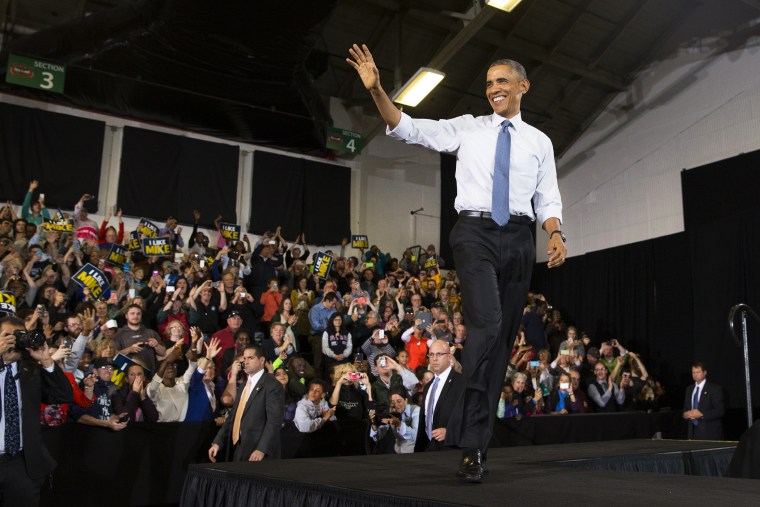Because 2-D art is so passé, the White House -- along with the Smithsonian Institution -- has captured and printed the first ever 3-D portrait of President Obama.
A video released by the White House late Tuesday shows what looks like a futuristic photo-booth. Actually, it's a "mobile light stage," which includes "50 custom-built LED lights, eight high-resolution sports photography cameras, and an additional six wider-angle cameras," Paul Debevec of the USC Institute for Creative Technologies explains in the video.
The president sits for only about one second, and using the mobile light stage, along with several handheld 3-D scanners, his likeness is captured with enough precision to create "the highest resolution digital model that’s ever been made of a head of state," according to Debevec.
Asked about the project's inspiration, Günter Waibel, director of the Smithsonian Digitization Program Office, said the project was motivated by the National Portrait Gallery's Lincoln life masks. "They're called life masks because these were directly taken from his likeness," Waibel explains in the video, "so there was plaster put on his face ... and seeing that made us think, what were to happen if we could actually do that with a sitting president, using modern-day technologies and tools to create a similarly authentic experience that connects us to history ... to a moment in time ... and to a person's likeness."
But the project isn't just about experimenting with 3-D printing technology. Tom Kalil of the White House Office of Science and Technology Policy says "it's also part of a broader trend, and that is the third industrial revolution," which Kalil describes as "the combination of the digital world and the physical world."
